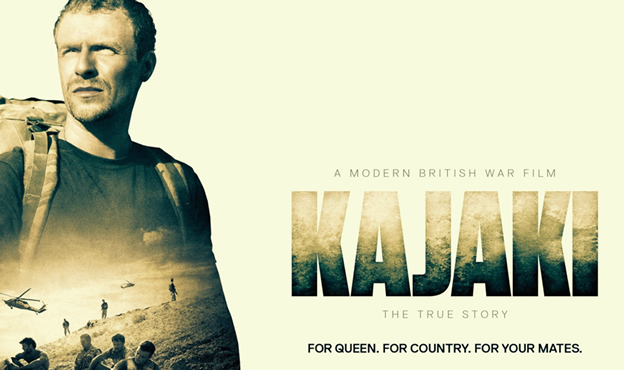 You may have heard the term ‘crowdfunding’ before. If you haven’t, then you certainly will over the next few years. It is the future of cinema, and it looks like it is here to stay. But what exactly is it? You may have heard the term ‘crowdfunding’ before. If you haven’t, then you certainly will over the next few years. It is the future of cinema, and it looks like it is here to stay. But what exactly is it?
With the help of Miranda Fleming, UK Creative and Marketing director of Indiegogo – one of, if not the biggest crowdfunding outlets around – we have compiled a back-to-basics guide of the four things you need to know about it. Plus exclusive tips on how to use it best.
IT’S THE THING OF THE FUTURE
By numbers, Indiegogo currently has over 40,000 film campaigns, with film-makers from over 166 countries gathering over seven billion monthly impressions. That is just Indiegogo’s figures, let alone other outlets such as Kickstarter or Seed and Spark. The industry has had a 115% increase over the past two years. Given its current status, the technology now available and how it ties with the film-making economy – it can only be expected to rise that much again in the next two years.
Put as basic as possible, and in the example of Indiegogo, it is an online platform that film-makers can share their film project on and visitors (if they like the idea) can then donate money and make the film a reality. This in turn then creates films that might not have been able to be made due to funding. It cuts out the Hollywood big sharks in between that choose which films exist and do not. It goes from the creative level straight to the production.
In the US, where crowdfunding of films had its genesis, Miranda explains that ‘it is a developed market and an incredibly strong industry’. In the last year alone, crowdfunding films has had incredible success that parallels studio funded films. Dear White People, an indie about college students made a huge $4.4 million at the box-office, Inocente – a coming of age story went onto win an Oscar award for Best Documentary short. More recently Kajaki: a story of British soldiers became nominated at the BAFTA’s. All crowdfunded.
So why has it become so popular? Is it that it cuts out the middleman of filmmaker – studio – distributor? Is it because it is now a viable option for (almost) anyone to create a film? Is it so we can see films deemed ‘not good enough for Hollywood’? Is it due to the expanse of online, VoD and digital viewing that there is now a demand for film? Or is it that niche fans can now fund what is important to them? Like a cats vs. whales? – It could be all of these reasons. But it is certain to stay around for a while.

This image I found on Google sums up the crowdfunding cycle nicely. Idea -> People -> Money -> Repeat.
Here is a little Q+A we did with Miranda to find out a little more about it … Enjoy.
What sort of trends occur from the Indiegogo website, going by the statistics, is there a type of person that funds ideas?
I think it is slightly different for the UK to the US [markets], but I think with a film campaign, firstly the audience will come from the fan base of the film-makers - the team that is putting it together - the campaign, but then more importantly on film anything that has a story has a niche. So if you take a film like Kajaki, which was based on an incident that happened. They very much focused on military supporters, campaigns based around charities set up with people in the armies who lost limbs and replacements. For them, I think they felt that they were the niche audience who would want that story to be told. So I think in film, that is why it works so well I think. For the fan-base, audience and a crowd - and how it all fits together, I think for the film, they are the primary audience.
There was a lovely story on a short story called 'A Horse Called Oz', just before Christmas. It reached £7000.00 and it was their second short film. They didn't necessarily have a big community as the story was about homelessness. So they had gone to the charities who were interested by the case of homelessness. They had gone to shelters, the Big Issue, they got a few things sent out on their specific social media. That, combined with a film audience, because they had done a lovely pitch video, a lovely display of the story - you kind of got a sense of it being a lovely short film. It brought together as niche audience of people who care about homelessness, with Indie film-makers who care about these short films being made and knowing that there is tools out there to fund these sorts of films. It hit its £7000.00 target with a week to go, but then in the last week it had two £1000.00 executive producer’s credits from two individuals in America. These film-makers had never been to America, but now they have two patrons who are their executive producers and I think that it is really nice for us to watch the reach of a UK film hitting it goal, and where that news and story came together, but then got a global pockets. So that is why crowd-funding is not just about the money. But other things too.
Are there any specific genres that you feel get more attention, or some that don't?
Yeah, I think again, country by country it differs. In America the Indie film-market is a very strong market. I still think it will grow like that too in the UK and Europe. But I think at the moment, films that have niche audiences work very well on crowd-funding. Those niche audiences are quite different from the distributor would say a niche audience is for a movie. So if you take Kajaki, you have literally got 500 people to mobilize and help their funding, tweet and help support their campaign. I think that audience, if you were a distributor releasing that to an audience, Kajaki. Perhaps you core-audience might be film-lovers. I mean it got nominated for a BAFTA, and it is an outstanding film. I love it. I need to scream and shout about it. But you can see those two different audiences. But it works for all genres.

Crowd-funding is a lot greater in the US that in the UK, Do you see that changing?
Definitely. It is a developing market. It is an incredibly strong industry, and in the US it is even still developing, and those development figures really are impressive. It is an absolutely impressive market. I think what interest me is that when distribution models start changing, and become more digital in Europe - as in online, like it did in America about three years ago, then it will be a lot more parallel. I think as we see those wheels move, and they have begun to turn at the end of 2014 in Europe. I think Europe has an incredibly passionate film-market. It would be my absolute hope and dreams to see in two years as big as the US's.
Crowd-funding has changed, or became more apparent since its genesis a few years ago. What you say that the popularity is just convenient, or because it is now a viable option for film-makers to use?
Absolutely. It has been there to replace a void that has been left by many in Indie film-making to start with. But I think it is new online models that are making production easier, and more cost effective, Sony distribution now gives film-makers a way of getting their film out in their own countries. They can go directly into the VoD platforms that means that they get a direct line to financing that doesn’t give away any of your rights and doesn't go across to any others.
With products that you fund, you can get awards from them. Are there any rewards that appeal best? Or you would suggest for others to use?
Yes. I think that personalisation and making people feel that you are not just asking for money, but put something there that includes them. There is a theatre company in Sussex, she had done 75 small oil-paintings to sell off as perks on her project. It was very in-line with what her theatre company was producing visually. I think that sort of lovely crossover and perks work well. I mean I never sit down and talk about crowd-funding, because every month something new astounds us about how something was done. There was a film called Iron Sky, they were incredibly creative. It shows that the campaigners can be the innovators. They, for a while had been selling extras-perks, or speaking part perks. They would pay a little bit of money and come and join them on set. It was something that always works very well. What I loved about Iron Sky is that they made about $100,000 out of giving away extra non-speaking part roles. But then again the creativity in the Iron Sky campaign - rather than just saying, we are giving away then extras. They have gone into the fine details, and named the roles. So there was a 'lizard man that gets eaten by a dinosaur' for the today. And then that would completely appeal to a comic book fan, or a sci-fi fan. It meant that they knew what role they were buying into, and would have their make-up done on set for the day. It is brilliant for a producer to be able to sell of perks like that.
Finally, are there any tips for avoiding development hell?
Don't ask for too much, because then you will always have a hard time climbing to get that goal. It is much better to think realistically. Contact us at Indiegogo - Miranda@Indiegogo.com and we are very happy to talk to film-makers before the campaign and give them the best shot possible.
|